 WAP did join a digital conference, set by “Future Project”, “Cervignano Nostra” and “Adri-Antartica”, held on Saturday June 6th, to promote and enhance a site called “Antarctic Memorial” being born in Cervignano, a city in Northern Italy near Trieste.
WAP did join a digital conference, set by “Future Project”, “Cervignano Nostra” and “Adri-Antartica”, held on Saturday June 6th, to promote and enhance a site called “Antarctic Memorial” being born in Cervignano, a city in Northern Italy near Trieste.
Pic aside shows the participants:
Luca Furios (Moderator)
Luca Palazzi (Student and maker of the scale model of the G.Bove base)
Prof PH D Julius Fabbri (IV3CCT)
Maria Teresa Scarrone President & Salvatore Puro Vice President (Associazione Culturale Giacomo Bove e Maranzana)
Carlos Pedro Vairo (Director of Marine and Antarctic Museum-Ushuaia, TdF, Argentina)
Gianni Varetto I1HYW (WAP)
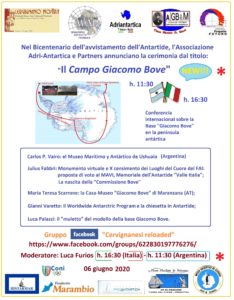 We are talking about a place (MAVI) entering in a challenge launched by FAI (Fondo Ambiente Italiano). Since 1975, FAI – Fondo Ambiente Italiano, the National Trust for Italy, restores and takes care of special places in Italy so that present and future generations from all over the world, may enjoy a priceless legacy.
We are talking about a place (MAVI) entering in a challenge launched by FAI (Fondo Ambiente Italiano). Since 1975, FAI – Fondo Ambiente Italiano, the National Trust for Italy, restores and takes care of special places in Italy so that present and future generations from all over the world, may enjoy a priceless legacy.
We already reported about this subject, but for those who wish to refresh their memory, here below are the links:
http://www.waponline.it/april-18th-2020-international-day-for-monuments-and-sites/ and http://www.waponline.it/the-giacomo-bove-antarctic-base-relives-in-italy-thanks-to-the-students/ .
Hereby a bit of the story:
In 1976 the film entrepreneur Renato Cèpparo, born in Portogruaro Italy, but lived in Milan, inaugurated the first Italian scientific research Base at Italian Valley, on King George island, Antarctica and named it to Giacomo Bove (WAP ITA-Ø2). After only 8 (eight) months, the base was dismantled by a group of 30 sailors from the Argentine Navy. That has caused a diplomatic happening and the case… a classic “cold case” is still open
Despite the initial support of the Argentines and the Italian institutions (CNR, Foreign Ministers, Universities, etc.), the entrepreneur was soon “discharged” and began his “ban”, a modern example of “damnatio memoriae” that, nowaday, is still on!
Forty years later, an high school teacher, prof. Julius Fabbri, after having been in Antarctica in front of King George Island, decided to build a memorial to recall the ” Giacomo Bove Camp“, which had been so named in memory of the homonymous hydrographer, officer of the marine direction Giacomo Bove (23 april 1852 – 09 august 1887), the greatest Italian explorer of the nineteenth century.
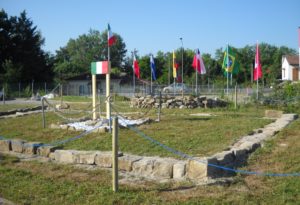 The “Valle Italia” Antarctic Memorial, Cèpparo-Bove (MAVI) was inaugurated in 2018, at the IISS Arturo Malignani of the Bassa Friulana, a UNESCO associated school.
The “Valle Italia” Antarctic Memorial, Cèpparo-Bove (MAVI) was inaugurated in 2018, at the IISS Arturo Malignani of the Bassa Friulana, a UNESCO associated school.
Beside the MAVI construction site, Prof. Julius Fabbri carries out the diplomatic project of “Establishment of the First Italian Antarctic Historical Site” (IPSSIA) with the Ministry of Foreign Affairs. This year In fact, the MAECI should have presented an article with a paragraph on MAVI, but unfortunately Covid19 had the event canceled.
The actual conference has been organized to document what has been done so far, and the Organizations that share and support the project.
The whole activities are coordinated by prof. Fabbri who founded the Adri-Antartica Association, together with national consortium set up to follow the various phases, together with the local committee “ItalyAntartide” of Cervignano del Friuli.
Among the dozens of supporters, there is “Giacomo Bove & Maranzana Association” the historical partner of the project (see http://www.giacomobove.it/ita/) .
The new visitor center called Antarctic Memorial “Valle Italia” (MAVI), Cepparo-Bove is available at IISS Arturo Malignani, Cervignano del Friuli, Italy.
Live stream video of the conference, is available on facebook at:
https://www.facebook.com/luca.furios/videos/10218089372407078/UzpfSTE2MjAwODM3ODY6MTAyMjA5MDIxMzg0OTYxMjc/
TNX Julius IV3CCT /II3BOVE, WAP-271.
(New callsign of the “Malignani 2000” School is IV3HIY , the project manager is OM Julius Fabbri, IV3CCT with the help of ARI Udine-Italian Amateur Radio Association).
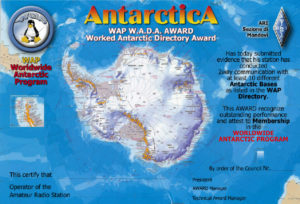 Thanks to Max IK1GPG for updating the annual ranking (WAP_ranking-issued) and the of the most popular WAP Antarctic Awards issued (WAP_awards-issued).
Thanks to Max IK1GPG for updating the annual ranking (WAP_ranking-issued) and the of the most popular WAP Antarctic Awards issued (WAP_awards-issued). IK1GPG Max, WAP Award manager at (wap_info@virgilio.it) asking information and/or to send him your list.
IK1GPG Max, WAP Award manager at (wap_info@virgilio.it) asking information and/or to send him your list.
 A sudden fire broke out at the Russian Antarctic station “Mirny”
A sudden fire broke out at the Russian Antarctic station “Mirny”  200 years is an important Anniversary and the well known at WW level: “Russian Robinson Club “ is happy for the highest participation achieved by the program in honor of the bi-centenary of discovering Antarctica.
200 years is an important Anniversary and the well known at WW level: “Russian Robinson Club “ is happy for the highest participation achieved by the program in honor of the bi-centenary of discovering Antarctica.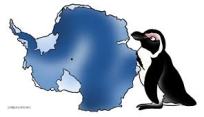 June 21 is the shortest day of the year, when in the southern hemisphere the winter begins. It is a tradition in this day, to commemorate the “
June 21 is the shortest day of the year, when in the southern hemisphere the winter begins. It is a tradition in this day, to commemorate the “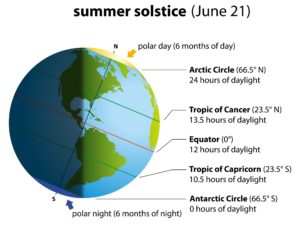 The summer solstice usually falls on June 21, and is said to mark the onset of summer in the Northern Hemisphere. It occurs when the North Pole is the nearest to the Sun. It is derived from the Latin word ‘sol‘ which means ‘sun’, and ‘sistere‘, which means ‘to stand still’ and occurs two times in a year, once in each hemisphere.
The summer solstice usually falls on June 21, and is said to mark the onset of summer in the Northern Hemisphere. It occurs when the North Pole is the nearest to the Sun. It is derived from the Latin word ‘sol‘ which means ‘sun’, and ‘sistere‘, which means ‘to stand still’ and occurs two times in a year, once in each hemisphere.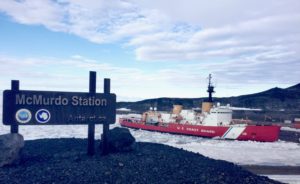
 The Bove Commission (COM-BO) is formed by a group of experts and volunteers from governmental and private institutions, with the common goal of getting more historic information on the dismantling of the Italian Giacomo Bove Station in Antarctica (WAP ITA-Ø1).
The Bove Commission (COM-BO) is formed by a group of experts and volunteers from governmental and private institutions, with the common goal of getting more historic information on the dismantling of the Italian Giacomo Bove Station in Antarctica (WAP ITA-Ø1).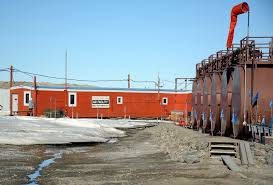 Marble Point, (
Marble Point, (
 We are talking about a place (MAVI) entering in a challenge launched by FAI (Fondo Ambiente Italiano). Since 1975, FAI – Fondo Ambiente Italiano, the National Trust for Italy, restores and takes care of special places in Italy so that present and future generations from all over the world, may enjoy a priceless legacy.
We are talking about a place (MAVI) entering in a challenge launched by FAI (Fondo Ambiente Italiano). Since 1975, FAI – Fondo Ambiente Italiano, the National Trust for Italy, restores and takes care of special places in Italy so that present and future generations from all over the world, may enjoy a priceless legacy. The “Valle Italia” Antarctic Memorial, Cèpparo-Bove (
The “Valle Italia” Antarctic Memorial, Cèpparo-Bove (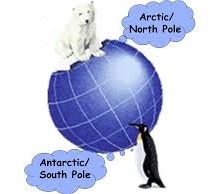 Arctic
Arctic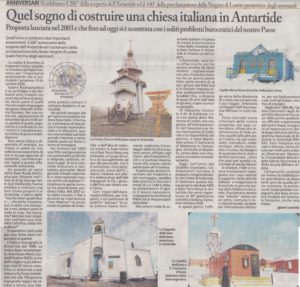 It’s an idea that comes from the heart, an idea that we have illustrated and explained in meetings, in several schools, to politicians, radio and TV, to bishops, cardinals and no less than 3 Popes in the last 13 years.
It’s an idea that comes from the heart, an idea that we have illustrated and explained in meetings, in several schools, to politicians, radio and TV, to bishops, cardinals and no less than 3 Popes in the last 13 years.